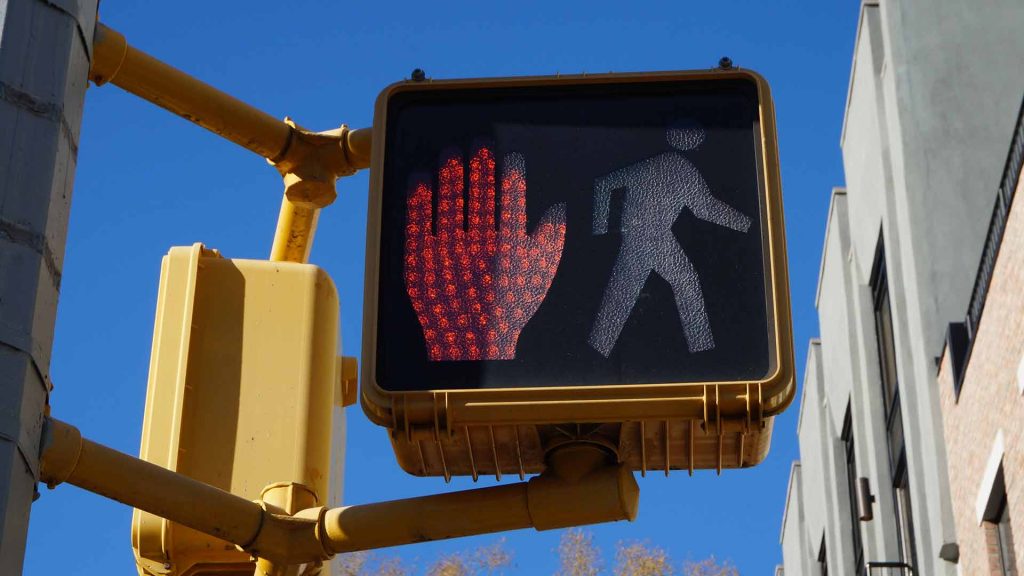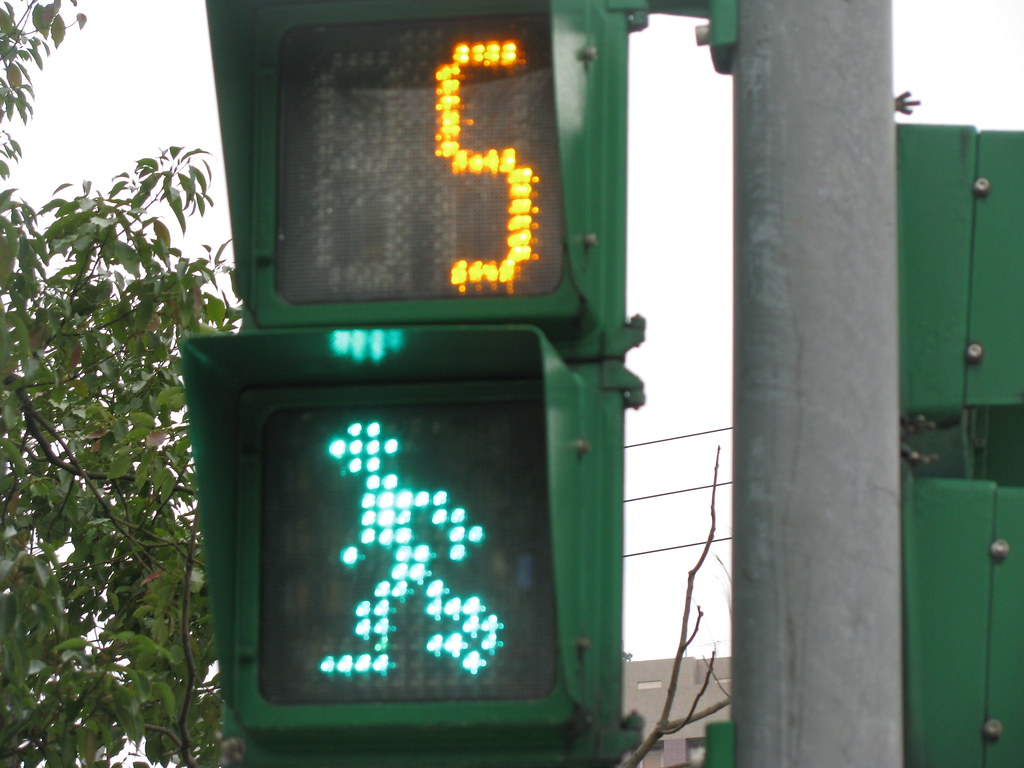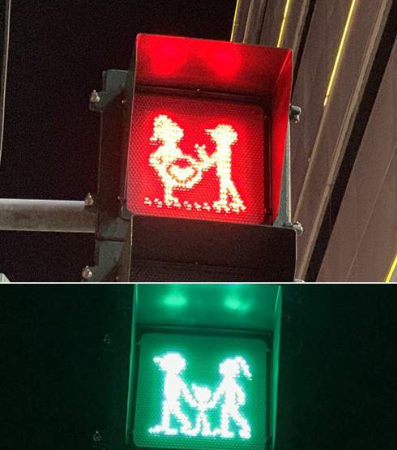A Cute Way to Prevent Traffic Deaths

At an early age, we learn to look both ways before we cross the street. Legally, in almost all places, pedestrians have the right of way. But the laws of physics do not care about the laws of us humans, and if a car hits a pedestrian, that’s bad for the person not in the moving vehicle. Helping people of all ages cross streets safely helps save lives.
In urban areas, we use pedestrian traffic lights, often simply called “walk signals,” like the one seen above. That’s an old New York City version, but it’s pretty clear what it’s trying to say. When the red hand is lit, you should stop; when the person lights up in white, look both ways and pay attention, but it should be safe to cross.
Effective — but boring. And when people are bored, they may zone out. So in 1999, Taiwan introduced a new traffic light and a new local hero: Xiaolüren, seen below.

That’s him — the little green guy in the lower box. (Xiaolüren translates to “Little Green Man.”) The image, though, doesn’t do him justice — because unlike the New York City guy above, Xiaolüren is animated — he walks as the time ticks down. And when time is running out, he picks up the pace. Here’s a video of Xiaolüren in action. (If the embedded video below doesn’t work, click here to view it.)
Whether that’s actually a good practice — you probably shouldn’t run across the street as time ticks down — is an open question. But it’s certainly fun to look at, and as a result, Xiaolüren has been a mainstay in Taiwan since his introduction. In May 2016, Google even celebrated our tiny green hero with its own Google Doodle, which can be seen here. (If you didn’t see it on Google itself back in the day, that’s because it was only released locally in Taiwan.) And yes, Xiaolüren has probably helped reduce accidents; his success in Taiwan has encouraged other nations to bring him to new shores; at least a dozen other countries ranging from Egypt to Brazil now use a similar animation in some of their walk signals (although many do not have Xiaolüren wearing a hat).
But like anything that was once new and innovative, even Xiaolüren became commonplace after a while. So on February 14, 2018 — Valentine’s Day — authorities in Pingtung County in Taiwan decided that Xiaolüren was old enough to enter a new phase in life. Starting on that day, the Xiaolüren graphics were a bit different than before, as seen below, via Taiwan News:

When green, Xiaolüren again would walk across the street, but now, he was joined by his girlfriend. And when the light turned red, Xiaolüren stopped — hopefully not in the middle of the street! — to propose marriage.
The Xiaolüren courtship graphics lasted four months, but at the end of that four-month marriage, Xiaolüren didn’t go back to being a bachelor. Instead, this happened:

(Apparently, the gestation period for a baby Xiaolüren is less than half as long as it is for a human baby.)
The new family version of Xiaolüren was in Pingtung for four months before the county reverted to the original, solo Xiaolüren version — the little green man got four months of parental leave (which is more than Taiwanese law requires).
Bonus fact: The Dutch city of Utrecht has similarly fantastic walk signals. In 1955, author and illustrator Dick Bruna — who was born and lived in Utrecht — created Miffy, a cartoon rabbit that you’re probably at least vaguely familiar with. Miffy’s global popularity led Utrecht to adopt her as the town’s unofficial mascot — there’s a statue of her in a square named for her, and you’ll often see the bunny on signage throughout the city. And if you’re paying attention when you cross the street (and please do!), you’ll also see her on some of the pedestrian traffic lights. As seen in this video, there are Miffy-themed walk signals in Utrecht; the red image is one of her standing still, and the green one features Miffy walking.
From the Archives: Green Light, Red Light: When traffic safety takes a back seat to anti-British sentiment.
